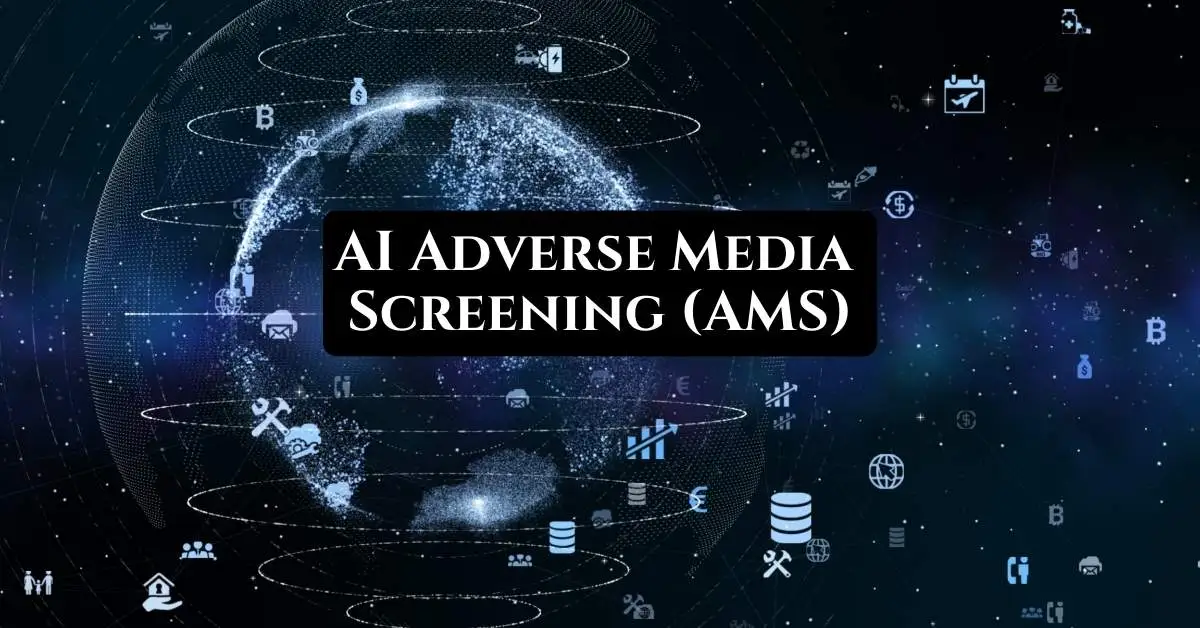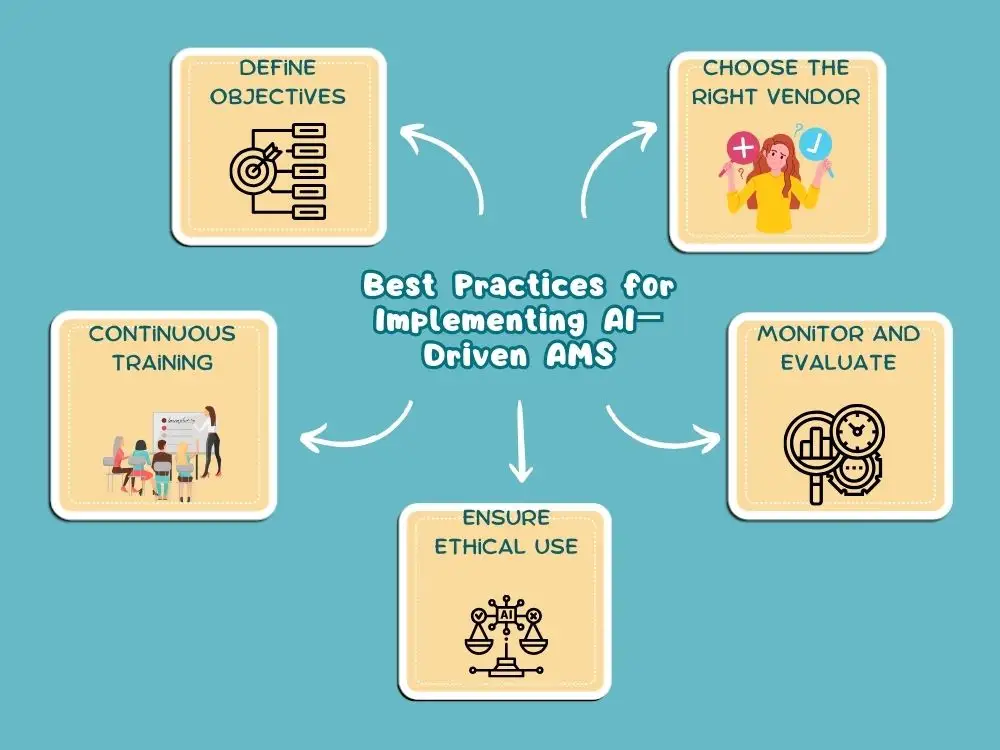
How AI-Powered Adverse Media Screening Protects Businesses from Financial Crime
Do you know how fraudsters try to sneak their dirty money into honest businesses like yours? It's a real worry for any business owner who wants to stay on the right side of the law. However, artificial intelligence (AI) helps businesses fight financial crimes through something called adverse media screening. It checks the background of your business partners and customers.
To do this, it reads through thousands of news stories and public records, looking for any warning signs about the people or companies you might do business with. In the past, businesses had to dig through all this information by hand, often missing important details about their customers and partners. But now, AI does this job much better and faster.
Key Takeaways
- Understand AI-powered adverse media screening and its role in risk management.
- Learn the key features and challenges of AI-driven adverse media screening (AMS).
- Know the importance of AMS in AML compliance with some case study examples.
- Explore best practices for implementing AI-driven AMS in your business.
- Understand the cost-benefit analysis of AI screening.
What is Adverse Media Screening?
It's a process of verifying any negative news about an individual or a company. Organizations have to perform this screening before they deal with individuals and businesses. This safeguards their firms from potentially risky relations with people or companies who might've been involved in shady dealings.

This screening helps you spot those red flags early and you can look through several important sources:
- Media and News Reports: This includes scanning newspapers and business magazines for anything suspicious, mostly regarding financial crimes and fraud. In the case of some scandals or other trouble with the law, it will show up.
- Social Media and Blogs: This is where whistleblowers might warn others about dubious business practices. For example, reputable blogs and online discussions.
- Government Records: By checking government databases, you can find out that the person or company you wish to work with has been fined or breached the law.
This screening is vital to comply with anti-money laundering (AML) compliance. However, the conventional process of manually checking these lists is tedious and complex. Moreover, to safeguard your business interests and reputation against fraudulent acts, they must be caught early where AI is essential.
Is AI Useful for Adverse Media Screening?
AI has completely changed how we spot risky business partners or customers. It simplifies the process of finding and understanding negative news about individuals and businesses. It works faster and more accurately than any human could. Plus, it includes features such as:
- Natural Language Processing (NLP): AI is powerful enough to read and understand text just like we do but at a massive scale. While we might get tired after reading hundreds of news articles, AI can zip through them in seconds which pick up important clues about potential risks. Plus, it understands different languages and can even make sense of poorly written or complicated text.
- Sentiment Analysis: AI can actually understand the tone of news articles which we call sentiment analysis. It can be positive, neutral, or negative. Whatever the case, AI reduces false positives and just focuses on the relevant information.
- Real-Time Monitoring: AI never sleeps. It constantly watches news sources, social media, and official records for any new red flags. The moment something concerning pops up about someone you're doing business with, you'll know about it.
Key Features of AI-Driven Adverse Media Screening Solutions
| Feature | Description | Impact |
|---|---|---|
| NLP | This feature helps process unstructured data to identify relevant content. | Reduce false positives. |
| Sentiment Analysis | Distinguishes negative news from neutral or irrelevant information. | Focus efforts on adverse cases. |
| Entity Recognition | This particular feature identifies individuals, companies, and other entities in complex datasets. | Enhance accuracy in screening. |
| Continuous Monitoring | Scan media sources 24/7 to provide real-time updates. | Identifies risks as they emerge. |
| Multi-Language Support | Process data in various languages and ensure global compliance. | Expand operational scope. |
| API Integration | Seamlessly integrates with existing compliance and KYC systems. | Improve workflow efficiency. |
| Text-to-Speech | Converts critical findings into audible alerts for rapid response. | Enhances accessibility for compliance teams. |
Challenges in Using AI for Screening
While AI is great at screening news and records, it's important to understand where it might fall short. There are two main challenges you should keep in mind:
- Data Bias: Even though AI is intelligent, it has been known to make unfair judgments based on its training data. For example, biased training articles could instill bias in the AI system toward businesses or people, causing it to miss real risks.
- Privacy Concerns: There are some privacy concerns regarding the usage of AI in adverse media screening solutions. It's mandatory for any organization Collecting and analyzing adverse media to adhere to data protection laws like GDPR.
Despite these challenges, AI remains a crucial tool for ensuring compliance with anti-money laundering (AML) regulations. Let’s see how in the next section.
AI Adverse Media Screening in AML Compliance
Let's talk about how AI screening helps businesses follow anti-money laundering (AML) rules. Just think about banks and other financial companies, they must have strong systems to catch financial crimes. That's where adverse media screening comes which is like having an extra layer of security. It helps these businesses stay on the right side of the law.

Here's how AI makes this screening work better in two important ways:
- Customer Due Diligence (CDD): Implementing CDD manually increases the chances of human errors that could lead to bigger challenges. But with AI tools, it's easy to verify the backgrounds of potential customers by identifying negative news or risk factors with the real-time monitoring system.
- Regulatory Reporting: AI streamlines the documentation and reporting of suspicious activities which ensures compliance with regulatory bodies.
Some Case Study Examples
1. Danske Bank Scandal (2017-2018)
Danske Banks is considered One of the largest banks in Europe that was involved in processing €800 billion in suspicious transactions according to Wikipedia. However, If AI-driven AMS had been implemented earlier, the bank could have detected adverse media linking their customers to criminal activities.
2. Wirecard Collapse (2020)
Another major example of firms exploiting financial crimes due to conventional methods is The German fintech company Wirecard. It failed to detect and act upon adverse media indicating financial irregularities which ultimately led to its insolvency. AI systems could have flagged early warnings, preventing such a catastrophic collapse.
Best Practices for Implementing AI-Driven AMS
If you’re thinking about using AI to help with your screening process, here’s a simple guide to make sure you get it right. Check out these five key things you should focus on:

- Define Objectives: First, know exactly what you want to achieve. Are you tired of getting too many false alarms? Need to speed up your screening process? Write down your goals clearly which will help you measure if AI is actually helping.
- Choose the Right Vendor: The second thing is choosing the right vendor who provides the right AI solution. Look for something that fits your specific needs and follows all the rules your business needs to comply with.
- Continuous Training: Keep in mind that AI requires frequent updates. Just like your team needs ongoing training, your AI system needs to learn about new types of financial crimes and screening methods. Ensure that your system stays up-to-date with the latest risks and regulations.
- Monitor and Evaluate: keep an eye on how well the system works. Evaluating from time to time is a good approach to see whether or not AI is doing what you want it to do. Is it catching the right risks? If it misses something critical, you may use that information to adjust how it works for your business.
- Ensure Ethical Use: Finally, use AI responsibly. Respect privacy laws and promote fairness. You don't want your screening system to unfairly flag certain groups or handle sensitive information inappropriately.
Cost-Benefit Analysis of AI Screening
Let's break down what it costs and what you get in return when using AI for screening:
A) A rough estimate of what You'll need to spend (Costs):
- A good AI screening solution will cost you around $10k to $50k per annum.
- Existing systems integration will cost you around $5k to $15k.
- Training your team could range from $2k to $5k a year.
B) What You'll Get Back (Benefits):
- Cut down false alarms by about 70% which means fewer wasted hours.
- Screen customers 4 times faster than manual checks.
- Most businesses see their investment paid back within 18 months.
C) Time You'll Save:
- Your team will spend an average of 4-6 hours screening manually for each customer.
- AI will do this in 15-30 minutes.
- Plus, AI works 24/7 and catches risks immediately rather than during periodic reviews.
It's also essential to remember that these figures are pretty standard for medium-sized businesses. Any deviations might arise based on your firm's requirements and size.
Start Your Business Verification Process
While AI-powered adverse media screening is broad, you can begin basic due diligence with our free business verification tools:
- Check the legitimacy of a business's website with our Domain Age Checker
- Verify claimed locations of customers or potential business partners using our IP Address Location tool
Try these free tools at Smart Tools AI to start your basic verification process. Remember, while these tools provide helpful insights, they should be part of a broader screening strategy that includes proper adverse media screening and AML compliance measures. Moreover, check if a business’s website is flagged for suspicious activity using this Website Blacklist Checker.
Wrapping Up
AI Adverse media screening boosts risk management by identifying possible threats in real-time. Integrating AI into KYB and CDD processes allows businesses to enforce legal compliance, secure their reputations, strengthen due diligence, and avoid costly issues. Moreover, AI-driven AMS provides accuracy and a proactive approach to minimizing financial, legal, and reputational risk.
FAQs
Q1: What is the difference between AMS, KYB, KYC, and CDD?
AMS (Adverse Media Screening) identifies risks by monitoring news about partners, suppliers, and customers. KYB (Know Your Business) verifies the legitimacy of businesses. KYC (Know Your Customer) is important to check customer identities while CDD (Customer Due Diligence) checks customer risk to prevent fraud.
Q2: What are some popular AI tools for AMS?
Some popular AI tools for Adverse Media Screening include Refinitiv World-Check which offers a global risk intelligence database. ComplyAdvantage is known for AI-driven AML and fraud detection. Dow Jones Risk & Compliance offers real-time risk screening.
Explore Related Posts
https://smarttoolsai.com/post/merchant-fraud-protection
https://smarttoolsai.com/post/liveness-detection-secure-customer-onboarding-and-business-operations
https://smarttoolsai.com/post/osint-framework-for-businesses
.webp)